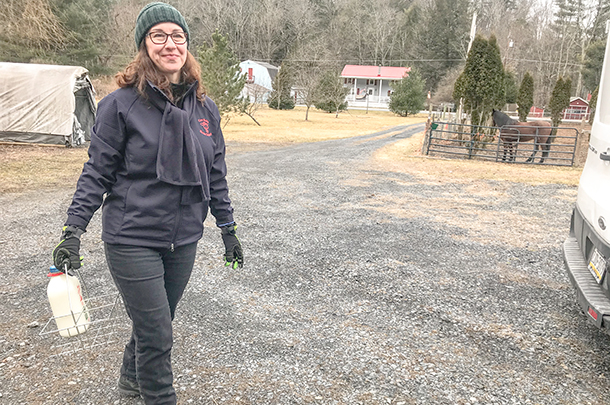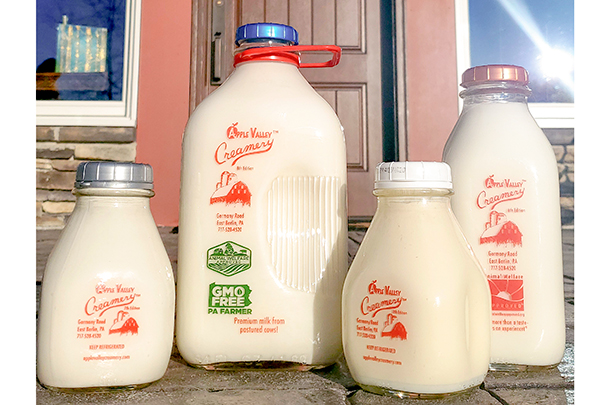Small to mid-sized dairy operations have been discovering new ways to stay strong. The dairy industry as a whole has seen depressed sales and profits, which most believe is due to America’s shift to alternatives for dairy products. It seems in these times it has become advantageous for producers to look at their models differently; after all, a diverse model is more resilient. While dairy producers may still be selling through traditional channels, many are seeing the positive response from their communities on a direct-to-consumer type operation.
Matt Shatto of Shatto Dairy in Osborne, Missouri, explains what moved them to establish a straight line from farm to consumer. “The decision wasn’t made in response to the market. We had talked about doing it since 2007; we just never got around to it. But, once we saw the culture moving to direct, we knew we had to pull the trigger,” Shatto says. By using the “cow to curb” mentality, they were able to establish themselves as a local presence across the Kansas City area, even outside the grocery store shelves.
Most producers who have adopted home-delivery programs have also taken it a step further to include other locally available items – from produce to dog treats. Having the ability to offer an extensive number of products leads the operation to be profitable while also creating more market space for local producers of varying industries. This allows dairies to build upon their reliability from a single product source to an overall essential grocer source. “We wanted to expand the local exposure to producers of other products that were truly local to our customer base,” Shatto says.
Each community that has a local dairy home-delivery source has seemed to embrace not only the company but their employees as well. The weekly delivery is looked forward to by all, and many consumers reveal that seeing that nostalgic milk truck is the highlight of their week. Many customer reviews and responses speak to how they enjoy the scheduled delivery, and it becomes an event for families, especially given the light of current social interactions around the country.
Due to COVID-19, most dairies with home-delivery programs have reached capacity, and many have added employees and equipment to be able to meet the increased demand of doorstep delivery. Many of these direct marketers believe having the ability to provide customers with necessary groceries in this dire time has established them as a staple that their communities will continue to rely on long after this pandemic has passed.

Cow Belle delivery serves the Lehigh Valley & Pocono regions of Pennsylvania, and since the beginning of COVID-19 hitting the U.S., owner Angie Rondolet has tripled weekly deliveries. Juggling the sudden jump in orders has been difficult, but it has allowed her to accelerate her business plan extensively. Yet, even with the increase, Rondolet has stayed firm in her mission to provide quality products from “happy cows,” as she says.
Apple Valley Creamery has been a family-owned operation since 1928 and they have an Animal Welfare Approved certification. They are the sole supplier for Cow Belle of milk and milk products. Rondolet’s highlight of her program is the combination of convenience and customer service provided by breathing life back into the old-fashioned milk delivery industry.
A common principle most of these operations have is they continue to bottle their milk in glass bottles. Top O’ The Morn farms in Tulare, California, stands by their roots dating back to 1962 and brought back their glass bottling system in 2012. The glass bottles give not only an eco-friendly option, but also sustain the nostalgia and quality of the milk product. Major opinion also is that milk from glass bottles has a fresher taste compared to that from a plastic container.

Munroe Dairy in East Providence, Rhode Island, has developed another way to allow small local dairies to have the option to deliver their products to local doorsteps. In a co-op fashion, Munroe dairy collects milk from three local dairies and has product from farm pickup to doorstep in under 48 hours. By creating this environment, they have been successful in meeting their demands and keeping their customer base growing. This also allows local exposure for not just one but multiple dairy farms in their area, making the whole experience a large benefit for local economies.
Social media has become a necessary marketing tool, especially for producers looking to move their product locally. According to the Pew Research Center, 55% of adults in the U.S. get their news from social media often. While it can still be difficult to manage the accuracy of information from these platforms, it gives smaller operations an advantage: immediate interaction with their local presence.
By posting photos, videos and facts about the dairy industry and letting consumers see an “inside look” on how their dairy products are produced, dairy farmers can give their consumers a sense of ownership to their brand. Consumers can see where the cows live, how they are treated, what they eat and even their names in some cases. While some producers may be reluctant to pursue social media, it can be leveraged endlessly when looking at being a grassroots provider to a local area.
Consumers in 2020 are looking to have a connection with their groceries. When they can establish a connection to a local product, it has proven to be beneficial for all involved. Consumers know their product and producers benefit and support local economies. Different sectors of agriculture continuously support each other, and home delivery offers an option for everyday consumers to support their local agriculture producers. ![]()
PHOTO 1: Apple Valley Creamery milk makes its way to a consumer's doorstep via Cow Belle delivery.
PHOTO 2: Angie Rondolet, owner of Cow Belle, loads milk crates to be delivered.
PHOTO 3: Apple Valley Creamery products are delivered to consumers within 48 hours of production. Photos courtesy of Strong Mountain Media.
Nicole Richardson is a freelancer from Missouri.





